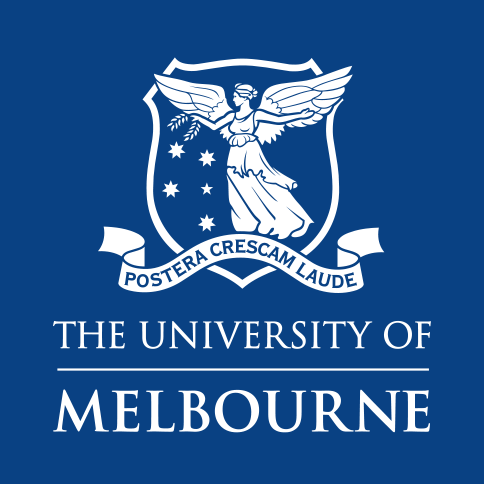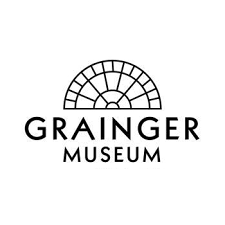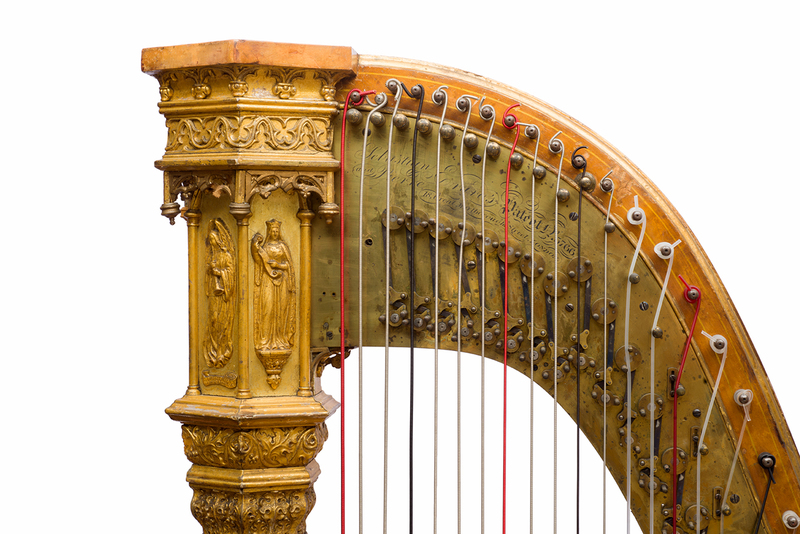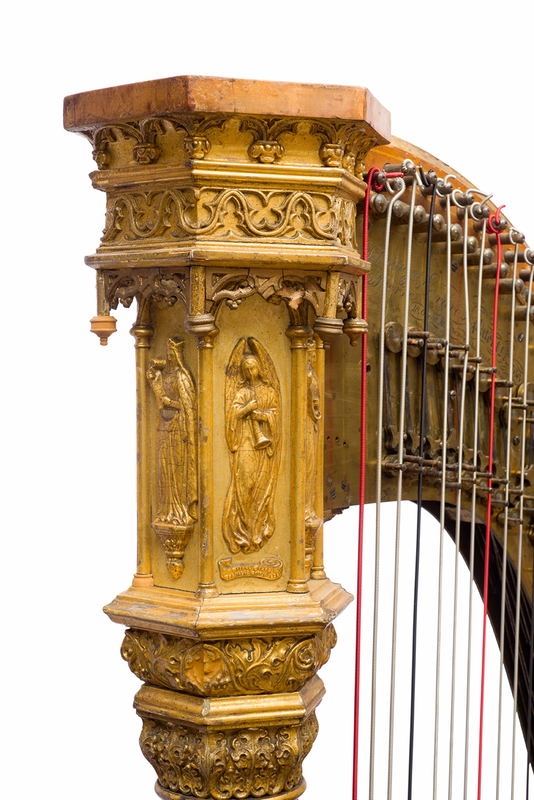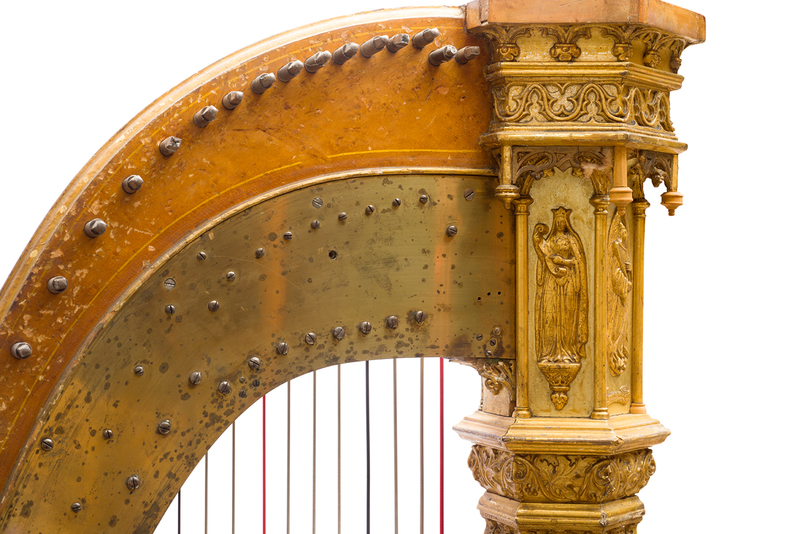Orchestral harp
Dublin Core
Title
Orchestral harp
Description
At the turn of the twentieth century, when Australia’s first permanent orchestras were beginning to emerge, the University of Melbourne employed Walter Barker as Victoria’s first university level harp teacher. Barker established himself in Melbourne touring Australasia and America with well-known singers, playing in one-off concerts and occasionally performing in Alberto Zelman’s Melbourne Symphony Orchestra. His influence on the development of harp playing in Victoria is seen in his students and grand-students, probably the best known of whom was another Melbourne Symphony Orchestra player Adrian Bendall. Bendall’s mother, Alicia Maud Bendall nee Bartlett, learnt how to play from Walter Barker and she, in turn, taught four of her own children and five of her grandchildren. Mary Anderson, Alicia Bendall’s granddaughter, continues this important tradition of harp playing as principal harpist with Orchestra Victoria.
Walter Barker was born in 1864 in Yorkshire. He won his first prize at an eisteddfod at the age of nine before entering the Royal Academy of Music (RAM) in London in 1879 at the age of 14. He was recommended for entry into RAM by Welshman and royal harpist John Thomas but also studied organ, violin and piano. A thumb accident led him to focus his studies on the harp and in 1880 he won a Bronze Medal in the RAM competitions before graduating as an Associate a few years later in 1883. Barker first visited Australia while on tour with singers Madame Patey and Ada Crossley performing in Bendigo in 1890. He immigrated to Australia in 1895 after a tour with the Trebelli Concert Co. and later also toured with Charles Santley, Mrs Palmer, Antonia Dolores and Armes Beaumont.
Walter Barker was the first harp teacher at the University of Melbourne’s new conservatorium working there in 1895 and then from 1916 until 1925. In 1906 Barker performed in Melbourne at a farewell concert arranged for Mrs W.J. Turner who was returning to England. A review of this concert in The Musical Monthly described Barker’s playing as exquisite. A concert program for a performance by Zelman’s Melbourne Symphony Orchestra on 15 December 1917 in the Melbourne Town Hall lists Barker as the harpist. On this occasion he played the beautiful ‘Meditation’ from the Opera ‘Thais’ by Massenet with violinist Imelda Clancy. By 1925 Walter Barker had tragically lost nearly all his eyesight and was forced to retire. Reflecting upon his career, The Australian Musical News wrote of Barker: “No finer harpist has been heard in Australia than Mr Barker, and for years his name was almost inseparable from leading concert platforms”.
After he died on 27 September 1933 at his home in Queens Parade, Barker’s widow donated his 1830s Erard harp to the University of Melbourne's Grainger Museum the year the museum opened in 1938. The Barker harp is a double-action pedal harp made by Sebastian and Pierre Erard in London. Barker brought this harp with him when he emigrated from England and loved the instrument so much that he did not want anyone else to play it after his death. Barker’s harp was “the subject of something like worship by the fine musician, especially after the years in which it had been associated with his many successes”.
Walter Barker was born in 1864 in Yorkshire. He won his first prize at an eisteddfod at the age of nine before entering the Royal Academy of Music (RAM) in London in 1879 at the age of 14. He was recommended for entry into RAM by Welshman and royal harpist John Thomas but also studied organ, violin and piano. A thumb accident led him to focus his studies on the harp and in 1880 he won a Bronze Medal in the RAM competitions before graduating as an Associate a few years later in 1883. Barker first visited Australia while on tour with singers Madame Patey and Ada Crossley performing in Bendigo in 1890. He immigrated to Australia in 1895 after a tour with the Trebelli Concert Co. and later also toured with Charles Santley, Mrs Palmer, Antonia Dolores and Armes Beaumont.
Walter Barker was the first harp teacher at the University of Melbourne’s new conservatorium working there in 1895 and then from 1916 until 1925. In 1906 Barker performed in Melbourne at a farewell concert arranged for Mrs W.J. Turner who was returning to England. A review of this concert in The Musical Monthly described Barker’s playing as exquisite. A concert program for a performance by Zelman’s Melbourne Symphony Orchestra on 15 December 1917 in the Melbourne Town Hall lists Barker as the harpist. On this occasion he played the beautiful ‘Meditation’ from the Opera ‘Thais’ by Massenet with violinist Imelda Clancy. By 1925 Walter Barker had tragically lost nearly all his eyesight and was forced to retire. Reflecting upon his career, The Australian Musical News wrote of Barker: “No finer harpist has been heard in Australia than Mr Barker, and for years his name was almost inseparable from leading concert platforms”.
After he died on 27 September 1933 at his home in Queens Parade, Barker’s widow donated his 1830s Erard harp to the University of Melbourne's Grainger Museum the year the museum opened in 1938. The Barker harp is a double-action pedal harp made by Sebastian and Pierre Erard in London. Barker brought this harp with him when he emigrated from England and loved the instrument so much that he did not want anyone else to play it after his death. Barker’s harp was “the subject of something like worship by the fine musician, especially after the years in which it had been associated with his many successes”.
Source
Grainger Museum Collection, University of Melbourne. Gift to the Grainger Museum 1938
Publisher
Grainger Museum
Date
1835
Identifier
00.0018
